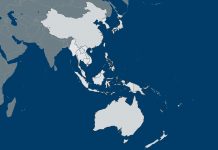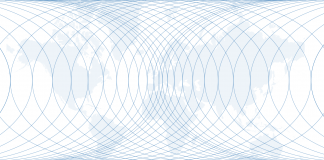The United States has openly accused Iran of being behind the drone and cruise missile attacks on Saudi Arabia’s largest oil refinery. Now the question is what the United States will do in response.
The U.S. is in a difficult position. The attacks did not directly affect the U.S., save for the spike in oil prices, which actually helps the American oil industry. There is a temptation to let the attacks slip into history. But the United States has formed an anti-Iran alliance in which Saudi Arabia is a key (though weak) player. Saudi Arabia is under internal pressure from members of the royal family who oppose Crown Prince Mohammed bin Salman, and low oil prices have undermined the kingdom’s political cohesion. Doing nothing would call the U.S.-sponsored coalition into question. Saudi Arabia is an important player in the Sunni Arab world – and that world is the main threat to Iranian expansion. Failing to respond to an Iranian attack on a vital Saudi facility could help Iran increase its power throughout the region. During Donald Trump’s presidency, the United States’ inclination has been to avoid initiating direct military action in favor of applying economic pressure instead. He has maneuvered to minimize and halt active military engagement. Military action against Iran, therefore, would both endanger the alliance structure and cut against U.S. strategy.
An alternative option would be to introduce new sanctions, but there are two problems with this move. First, sanctions do not have the psychological impact military action does. The psychological impact would be on both Iran and the Sunni world, and the logic of the situation requires it. Second, the U.S. has already imposed painful sanctions on Iran’s economy. Any further sanctions would have limited effect and insufficient heft.
There is one military option that would have a severe economic shock but would also limit U.S. exposure: imposing a blockade on Iranian ports, with a selective closure of the Strait of Hormuz. This strategy has three weaknesses. First, a large naval force of multiple carrier battle groups would have to be deployed for a potentially unlimited time. Second, the fleet could come under attack from Iranian missiles, and while we would assume that U.S. naval vessels have effective anti-missile capabilities, any mistake could cost the U.S. a major vessel. To counter this, anti-missile air attacks as well as defensive measures would be needed, creating a second potentially costly dimension to this operation. Finally, such a blockade is by definition without a terminal point. If Iran does not fold under the pressure, the blockade could continue indefinitely, since ending it without a successful outcome would be seen as a defeat.
Another possible response would be to launch strikes against Iranian targets. The most appropriate target would be the factories producing drones and cruise missiles, along with storage facilities and so on. Here, the problem is getting accurate intelligence. The U.S. has undoubtedly been cataloging such things, but acting on poor information could result in an Iranian strike on U.S. forces or another sensitive site under informal American protection. This would only compound the problem of the Iranian attacks on the Saudi refinery.
The difficult question the U.S. faces is whether it should take an action so painful that it will block any further actions from Iran. If a blockade doesn’t shatter Iran’s economy, then escalation to eliminate its offensive air capability is needed. As for an air campaign, history has shown that they tend to take much longer than expected and sometimes fail altogether, providing the adversary an opportunity to take offensive action on its own. A U.S. attempt to eliminate Iran’s strike capability can be costly, and hidden Iranian missiles can attack regional targets. As with a blockade, an air campaign can go on indefinitely. Small-scale retaliatory strikes open the door to Iranian countermoves and could escalate into an extended operation.
As for sending in ground troops, not only does that not quickly solve the problem of Iranian air power, but it also returns the U.S. to a posture it has been in since 2001: occupation warfare. The U.S. military fully deployed can defeat the Iranian military and take terrain, but to hold it against a hostile militia would create interminable conflict with casualties that cannot be sustained. Iran is a big and rugged country, with a population of 82 million people, more than twice as large as Iraq or Afghanistan. And the idea that U.S. troops would be greeted as liberators is mere fantasy.
Apart from an air attack on Iran designed not to achieve a significant goal but rather to give the Saudis confidence in the U.S., the options for a direct attack are not promising. But there is another way to think about this problem. The United States has been concerned about Iran’s expanding political influence. But this creates potential targets that are of high value to Iran – and hitting these targets would be less daunting than an attack on Iran itself. Iran has its own or proxy forces in Iraq, Syria, Lebanon and Yemen. It has invested a great deal of time, resources and risk in creating these forces that are now holding territory in these countries.
Consider Lebanon, a place where Iran has been highly active since the 1980s through its proxy Hezbollah. If Hezbollah could be crippled, the political structure of Lebanon would shift out of Iran’s control, and Iran’s anchor on the Mediterranean would be gone. Such an operation could not be left to the Israelis partly because their force is much smaller than what the U.S. could bring to bear, and also because collaboration between U.S. and Israeli forces would put the U.S.’ Sunni allies in a difficult position. Such a response would directly hurt Iran’s interests but could be carried out at lower risk and at higher cost than other options.
Indeed, the very threat of an attack on Hezbollah might cause the Iranians to change their strategy. Of course, an attack there might also unleash a torrent of missile strikes from Iran, and that is the downside of this and all the other strategies. But the advantage is that where other strategies would likely fail to achieve their goals, an attack on Hezbollah might well succeed. It would be something Iran would not want to see and would be carried out by secure U.S. forces. Alternatively, the U.S. could attack Iranian forces in Syria, but that would have a lower impact.
This is a theoretical exercise; answering Iran’s attacks with an air campaign on a proxy power is unlikely. The Saudis would have trouble portraying it as U.S. commitment to Saudi security. Attacks in Syria, Iraq and Yemen would all suffer from a lack of clarity and from the fact that Iran itself would not be hit. There is the possibility that the Saudi air force could retaliate, but its ability to sustain losses and conduct an extended air campaign is doubtful. The Saudis could fire missiles at Iran, but that would begin an open-ended exchange, and the U.S. strategy has to be to hurt Iran in a mission with closure.
The Iranians know the dilemma they have posed the United States. They have bet that the risks are too high for the United States to respond. But the problem in Iran’s thinking is it can’t be sure the degree to which the U.S. sees Iranian expansion as a threat to U.S. long-term interests in the region. So the Iranians are asking the U.S.: Are you feeling lucky?
There would appear to be no good military options. Doing nothing could well destroy the anti-Iran bloc the U.S. has worked hard to create. The likely but not certain answer to this problem will be a symbolic retaliation. The problem with retaliations, however, is that they get out of hand.






